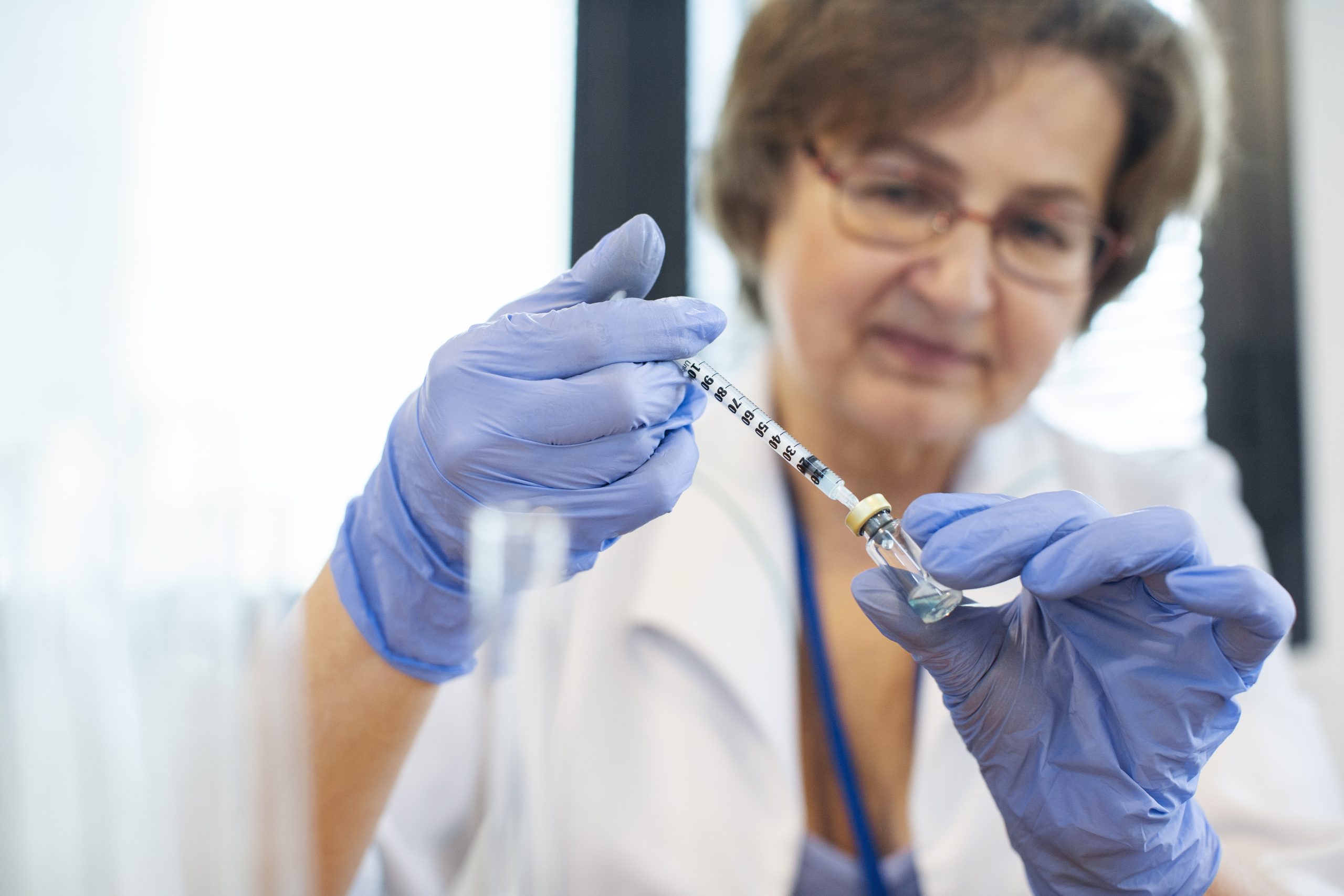Last Updated on November 27, 2025 by Bilal Hasdemir

Advanced squamous non-small cell lung cancer is tough, but new treatments are helping. We know how hard this disease is and how important it is to find the best treatments.
Squamous cell lung carcinoma is a part of NSCLC, making up 20-30% of cases. When it gets advanced, it needs careful and caring treatment. At Liv Hospital, we use targeted therapies and immunotherapy to help patients as much as we can.
We have a team approach to help patients. This means they get the best advice and access to new treatment options. We aim to give top-notch healthcare and support to patients from around the world.
Key Takeaways
- Advanced squamous NSCLC requires thorough care.
- Personalized medicine is making a big difference.
- Liv Hospital offers top standards of care.
- Targeted therapies and immunotherapy are key treatments.
- Our team approach ensures trusted advice and support.
Understanding Squamous Cell Lung Carcinoma
It’s important to understand squamous cell lung cancer to find good treatments. This cancer starts in the squamous cells of the lungs. These cells line the airways in the lungs.
What Defines Squamous Cell Lung Cancer
Squamous cell lung cancer comes from squamous cells in the lung. It grows fast and is hard to treat. Most people with this cancer have smoked before.
We also look at the cancer’s genes to understand it better. New studies have found certain genetic changes in this cancer. These changes might help us find new treatments.
Prevalence and Risk Factors
About 20-30% of NSCLC cases are squamous cell lung carcinoma. Smoking is a big reason why this cancer happens.
| Risk Factor | Description | Impact on Squamous Cell Lung Cancer |
|---|---|---|
| Smoking | Tobacco use is a major risk factor | High risk of developing squamous cell lung carcinoma |
| Age | Risk increases with age | Most cases diagnosed in individuals over 65 |
| Occupational Exposure | Exposure to certain chemicals and substances at work | Increased risk, particular in industries involving asbestos and radon |
As noted by a leading oncologist, “The association between smoking and squamous cell lung cancer is well-established, highlighting the importance of smoking cessation programs in reducing the risk of this disease.”
We need to think about these risk factors when we talk about squamous cell lung carcinoma. For more info on lung cancer treatments, check out our page on whether you can be cured of lung.
Diagnosis and Staging of Advanced NSCLC
We use a mix of tests to find and stage advanced NSCLC. Knowing the disease’s extent is key for choosing the right treatment.
Diagnostic Procedures
Diagnosing squamous cell lung carcinoma involves several tests. Imaging tests like CT scans and PET scans show the tumor’s size and location. A biopsy is needed to confirm the diagnosis by checking lung tissue for cancer cells.
- CT scans give detailed lung and tissue images.
- PET scans spot areas of high activity, showing cancer.
- Biopsy samples are checked to confirm squamous cell carcinoma.
Staging System for Advanced Disease
The staging system for NSCLC uses the TNM classification. It looks at the tumor size (T), lymph node involvement (N), and metastasis (M). Advanced NSCLC is usually stage III or IV.
Stage III disease has larger tumors or more lymph node involvement but stays in the chest. Stage IV disease means the cancer has spread to distant places like the brain, bones, or liver.
Biomarker Testing for Treatment Selection
Biomarker testing has changed how we treat squamous NSCLC. It helps find specific genetic mutations to guide treatment. This makes treatment more effective for each patient.
Squamous NSCLC is different for everyone. Biomarker testing shows what makes each tumor unique. This helps doctors choose the best treatment.
Important Biomarkers in Squamous NSCLC
Several biomarkers are key in squamous NSCLC. PD-L1 expression is one, showing how well immunotherapies work. Other biomarkers, like TP53 mutations and PI3K pathway changes, also help decide treatment.
PD-L1 expression is a major biomarker in NSCLC. High levels mean a patient might respond well to certain treatments.
Impact on Treatment Decision-Making
Biomarker testing greatly affects treatment choices for squamous NSCLC patients. It helps doctors pick the best treatment based on biomarkers.
For example, high PD-L1 levels might mean starting with immunotherapy. Other biomarkers could suggest targeted therapies or chemotherapy.
We aim to give our patients the best care. Biomarker testing is key to this, helping us keep up with new treatments for squamous NSCLC.
Comprehensive Overview of Squamous Cell Lung Carcinoma Treatments
The treatment for advanced squamous non-small cell lung cancer (NSCLC) has changed a lot. This is thanks to new research and technology. Now, we have many treatment options that help patients live better and longer.
Historical Approaches
Old treatments for squamous cell lung carcinoma included chemotherapy and radiation. These methods helped some patients but had their limits. Platinum-based chemotherapy regimens were often used to make treatments stronger.
- Platinum-based chemotherapy (e.g., cisplatin, carboplatin)
- Other chemotherapy agents (e.g., gemcitabine, paclitaxel)
- Radiation therapy for localized disease or palliation
These old treatments were the base for new therapies. They helped pave the way for better treatments.
Modern Treatment Paradigms
New treatments like immunotherapy and targeted therapies have changed the game. These new methods give doctors more options. They offer hope to patients with advanced disease.
Some key modern treatments are:
- PD-1/PD-L1 inhibitors (e.g., pembrolizumab, nivolumab)
- Combination chemoimmunotherapy regimens
- Targeted therapies against specific molecular targets (e.g., EGFR, VEGF)
These new treatments have made a big difference. They’ve improved how well patients respond and live longer. They’ve also made life better for many patients. As research keeps going, we’ll see even more new treatments for squamous cell lung carcinoma.
Treatment #1: Platinum-Based Chemotherapy Regimens
For those with advanced NSCLC, like squamous cell carcinoma, platinum-based chemotherapy is key. We’ll look at how these treatments work, focusing on effective combinations.
Cisplatin and Carboplatin Combinations
Cisplatin and carboplatin are often used together to fight squamous cell lung cancer. Cisplatin is very effective but can cause kidney and nerve damage. Carboplatin is gentler but just as effective.
Adding other drugs to these platinum agents boosts treatment success. For example, mixing cisplatin or carboplatin with gemcitabine or paclitaxel improves results for squamous NSCLC patients.
Gemcitabine and Paclitaxel Options
Gemcitabine is a nucleoside analog that works well with platinum agents against squamous cell lung cancer. The mix of gemcitabine and cisplatin is a top choice, balancing effectiveness and safety.
Paclitaxel, a taxane, is used with platinum-based chemotherapy. Paclitaxel and carboplatin are a common choice, even for those who can’t handle cisplatin. This combo has been shown to extend life for advanced squamous NSCLC patients.
Platinum-based chemotherapy regimens are evolving, with research aiming to make them better. Understanding these treatments helps doctors give the best care to squamous cell lung carcinoma patients.
Treatment #2: Immunotherapy with PD-1/PD-L1 Inhibitors
PD-1/PD-L1 inhibitors have changed how we treat advanced NSCLC, mainly squamous cell carcinoma. Immunotherapy is now a key part of treatment, bringing better results and hope to patients.
Pembrolizumab as First-Line Therapy
Pembrolizumab, a PD-1 inhibitor, is now a first choice for advanced NSCLC, including squamous cell type. Studies have shown it improves survival and time without disease progression.
Pembrolizumab works well for some patients, lasting longer. PD-L1 expression on tumors helps predict who will benefit most. Higher PD-L1 levels mean better results.
“Pembrolizumab has revolutionized the treatment landscape for NSCLC, setting a new standard for advanced disease.”
Nivolumab in Previously Treated Patients
Nivolumab, another PD-1 inhibitor, works for those with advanced NSCLC who’ve tried chemotherapy before. Studies show it can extend life compared to second-line chemotherapy.
Nivolumab is generally safe, with fewer serious side effects than chemotherapy. Common side effects include tiredness, rash, and diarrhea, which can be managed with care.
| Treatment | Mechanism | Key Benefits |
|---|---|---|
| Pembrolizumab | PD-1 Inhibitor | Improved overall survival, durable responses |
| Nivolumab | PD-1 Inhibitor | Improved overall survival in previously treated patients |
Immunotherapy, including PD-1/PD-L1 inhibitors like pembrolizumab and nivolumab, is changing how we treat squamous cell lung carcinoma. Research is ongoing to improve patient selection, manage side effects, and find new combinations to better outcomes.
Treatment #3: Combination Chemoimmunotherapy
Combination chemoimmunotherapy is a big step forward in treating advanced non-small cell lung cancer (NSCLC). It mixes chemotherapy’s power to kill cancer cells with immunotherapy’s ability to boost the immune system. This could lead to better results for patients.
We’re seeing a big change in how we treat advanced NSCLC. Now, combining chemotherapy and immunotherapy is a top choice. This mix might help get past the limits of using just one treatment and make the immune system fight cancer better.
Pembrolizumab Plus Chemotherapy
The mix of pembrolizumab and chemotherapy looks very promising for advanced NSCLC. Studies show this combo can make patients live longer and stop cancer from growing faster than just chemotherapy alone.
In the KEYNOTE-189 trial, adding pembrolizumab to chemotherapy made a big difference. Patients lived for a median of 22.0 months, compared to 10.7 months with just chemotherapy.
- Pembrolizumab plus chemotherapy is now a top choice for treating advanced NSCLC without specific genetic changes.
- This combo is usually safe for most patients, with only a few side effects.
Atezolizumab Combinations
Atezolizumab, another PD-L1 inhibitor, has been tested with chemotherapy for NSCLC. The IMpower150 trial showed atezolizumab with carboplatin and paclitaxel (or nab-paclitaxel) worked well for non-squamous NSCLC.
Adding atezolizumab to chemotherapy made a big difference in how long patients lived without cancer getting worse. This was true, even for those with EGFR or ALK genetic changes.
Using atezolizumab with chemotherapy is a key option for treating advanced NSCLC. It offers a choice for patients, alongside pembrolizumab-based treatments.
Treatment #4: EGFR-Targeted Therapies
EGFR-targeted therapies are key for treating advanced squamous non-small cell lung cancer (NSCLC). They work by blocking the epidermal growth factor receptor (EGFR). This is important because EGFR is often too active in NSCLC, mainly in squamous cell carcinoma.
Necitumumab is an EGFR inhibitor that shows promise. It targets EGFR to slow down tumor growth and improve patient outcomes.
Necitumumab in Advanced Squamous NSCLC
Necitumumab is studied with chemotherapy for advanced squamous NSCLC. Trials show it can improve survival and slow tumor growth in patients.
Using necitumumab can cause side effects like hypomagnesemia and skin rash. But, these can usually be managed with the right care.
Other EGFR Inhibitors Under Investigation
Other EGFR inhibitors are also being looked at for squamous NSCLC. These include:
- Afatinib: An irreversible EGFR tyrosine kinase inhibitor that has shown activity in NSCLC.
- Osimertinib: A third-generation EGFR inhibitor with activity in NSCLC, including squamous cell carcinoma.
- Dacomitinib: Another irreversible EGFR tyrosine kinase inhibitor being explored for its efficacy in NSCLC.
These EGFR inhibitors are being tested in clinical trials. They are studied alone or with other treatments to see how well they work in advanced squamous NSCLC.
The growth of EGFR-targeted therapies is a big step forward for treating advanced squamous NSCLC. As research goes on, we’ll see more targeted and effective treatments for this tough disease.
Treatment #5: Antiangiogenic Agents and Novel Targeted Approaches
The use of antiangiogenic agents has brought new hope for treating advanced squamous cell lung carcinoma. These treatments aim to stop tumors from getting the blood supply they need to grow. By doing this, they can slow down tumor growth and help patients live longer.
Ramucirumab and VEGF Inhibition
Ramucirumab is a special antibody that targets VEGFR2, a key player in making new blood vessels. By blocking VEGFR2, ramucirumab stops tumors from getting the nutrients and oxygen they need.
Clinical Evidence: Studies have shown that ramucirumab, when used with docetaxel, greatly improves survival and slows tumor growth in patients with advanced NSCLC, including squamous types.
| Treatment | Median OS (months) | Median PFS (months) |
|---|---|---|
| Ramucirumab + Docetaxel | 10.5 | 4.5 |
| Placebo + Docetaxel | 9.1 | 3.0 |
FGFR and PI3K Pathway Targeting
Other new treatments are being looked into for squamous cell lung carcinoma. These include targeting the FGFR and PI3K pathways. These pathways help tumors grow and survive, and blocking them could offer new ways to treat cancer.
Emerging Research: Early studies suggest that FGFR inhibitors may help patients with NSCLC who have certain FGFR mutations. PI3K pathway inhibitors are also being studied, with some showing promising results in treating squamous cell lung carcinoma.
“The development of targeted therapies against specific molecular alterations has revolutionized the treatment landscape for NSCLC. Further research is needed to fully realize the future of these novel agents.”
As we explore these new treatments, finding biomarkers to predict who will benefit most is key. Researchers are working hard to develop treatments that are more effective and tailored to each patient’s needs.
Treatment #6: Radiation Therapy in Advanced Disease
Advanced NSCLC treatment often includes radiation therapy to ease symptoms and slow tumor growth. We use radiation therapy in many ways to help patients with advanced squamous cell lung carcinoma. This improves their quality of life and outcomes.
Radiation therapy is flexible and can be adjusted for each patient. It helps with both palliative care and curative goals. It targets specific areas or tumors.
Palliative Radiation Approaches
Palliative radiation therapy is key in managing advanced NSCLC. It aims to ease symptoms and enhance life quality for those with advanced disease. It’s used for:
- Reducing pain from bone metastases
- Lessening symptoms like dyspnea or cough from tumor obstruction
- Controlling bleeding or hemoptysis
We often use palliative radiation in a hypofractionated regimen. This means giving higher doses in fewer fractions. It’s good for patients who can’t move much or have advanced disease.
Stereotactic Body Radiation Therapy (SBRT)
SBRT is a precise radiation therapy. It gives high doses to small, well-defined tumors in a few fractions. It’s great for treating oligometastatic disease or early-stage NSCLC in patients who can’t have surgery.
SBRT’s precision reduces damage to healthy tissues. This lowers the risk of side effects. It’s a non-invasive option for treating NSCLC.
| Therapy Type | Primary Use | Benefits |
|---|---|---|
| Palliative Radiation | Symptom relief in advanced disease | Improves quality of life, relieves pain and other symptoms |
| Stereotactic Body Radiation Therapy (SBRT) | Treating oligometastatic disease or early-stage NSCLC | High precision, minimizes damage to healthy tissues, non-invasive |
Knowing the different radiation therapy options helps us tailor treatment plans. This way, we can better meet each patient’s needs, improving their care and outcomes.
Conclusion: The Future of Advanced Squamous Cell Lung Cancer Treatment
The fight against advanced squamous cell lung carcinoma is getting more complex. Yet, new treatments are emerging. These include platinum-based chemotherapy, immunotherapy, and chemoimmunotherapy. They have shown great promise in helping patients.
New therapies and research are on the horizon. Studies are looking into EGFR-targeted therapies and antiangiogenic agents. These could make treatments even better. As research grows, treatments will become more personalized, fitting each patient’s needs.
Introducing these new treatments into care will be key. Healthcare providers need to keep up with these advances. This way, they can offer the best care, improving lives and outcomes for those with this disease.
FAQ
What is squamous cell lung carcinoma, and how is it different from other types of lung cancer?
Squamous cell lung carcinoma is a type of lung cancer. It starts in the squamous cells, which line the airways in the lungs. This makes it different from other lung cancers, like adenocarcinoma, because of its cell origin and characteristics.
What are the risk factors associated with developing squamous cell lung carcinoma?
Smoking is the main risk factor for squamous cell lung carcinoma. Other risks include exposure to harmful substances like asbestos and radon, and having a history of lung disease.
How is squamous cell lung carcinoma diagnosed, and what diagnostic procedures are used?
Doctors use imaging tests like CT scans and chest X-rays to start diagnosing. A biopsy is then done to confirm cancer. The biopsy sample helps figure out the cancer type and stage.
What is the role of biomarker testing in treating squamous cell lung carcinoma?
Biomarker testing helps find genetic mutations in cancer cells. This guides treatment choices. For example, PD-L1 testing helps decide if certain immunotherapies are right.
What are the current treatment options for advanced squamous cell lung carcinoma?
Treatments include chemotherapy, immunotherapy, and targeted therapies. The choice depends on the disease stage, health, and biomarker results.
How does immunotherapy work in treating squamous cell lung carcinoma?
Immunotherapy boosts the immune system to fight cancer. PD-1/PD-L1 inhibitors, like pembrolizumab, block a cancer cell interaction. This helps the immune system attack the cancer.
What is the significance of combining chemotherapy with immunotherapy in treating squamous cell lung carcinoma?
Combining chemotherapy with immunotherapy improves treatment results. It makes cancer cells more visible to the immune system, boosting effectiveness.
Are there any targeted therapies available for treating squamous cell lung carcinoma?
Yes, targeted therapies like necitumumab are available. They target specific cancer proteins. Other targeted treatments are being tested in clinical trials.
What is the role of radiation therapy in treating advanced squamous cell lung carcinoma?
Radiation therapy helps manage symptoms and slow tumor growth. Techniques like SBRT deliver precise, high doses of radiation to tumors.
What are the future directions for treating advanced squamous cell lung carcinoma?
Future treatments include new targeted therapies and immunotherapies. Research aims to find better biomarkers and improve treatment outcomes.
Reference
NCBI. PMC article. https://pmc.ncbi.nlm.nih.gov/articles/PMC11937135/
National Cancer Institute (NCI). Non-Small Cell Lung Cancer Treatment (PDQ). https://www.cancer.gov/types/lung/hp/non-small-cell-lung-treatment-pdq








